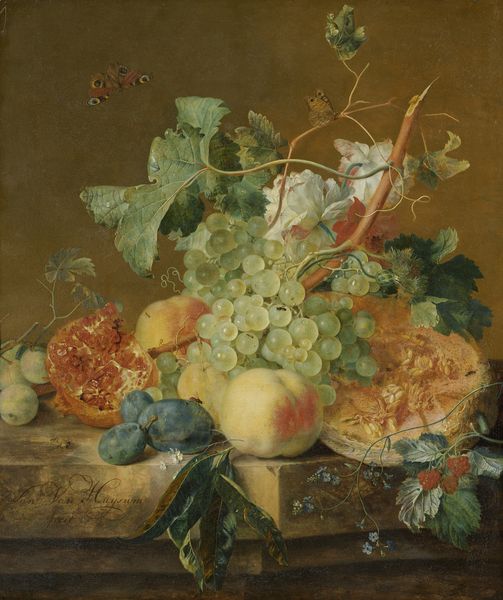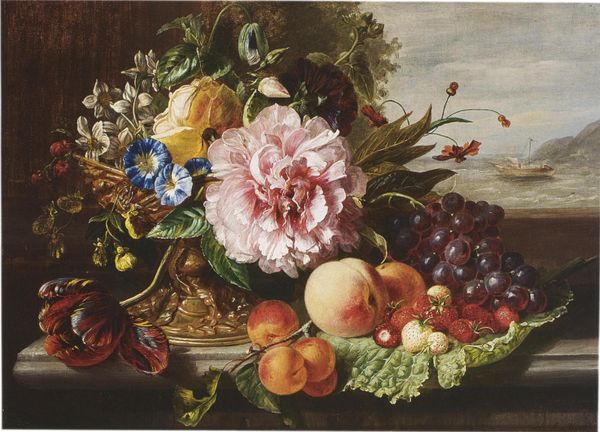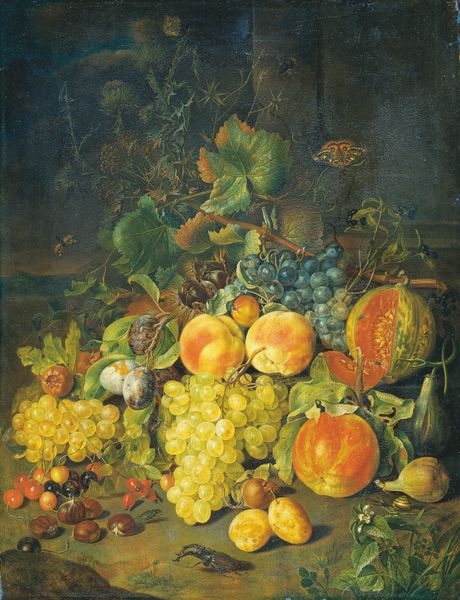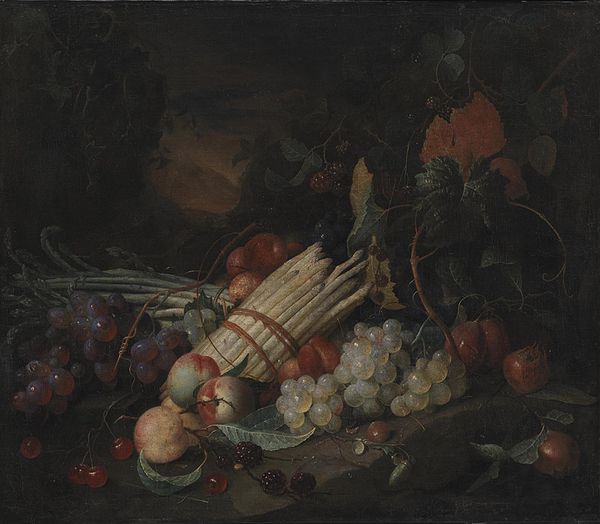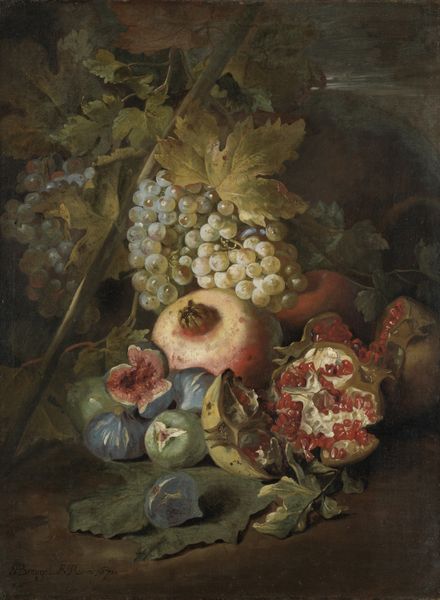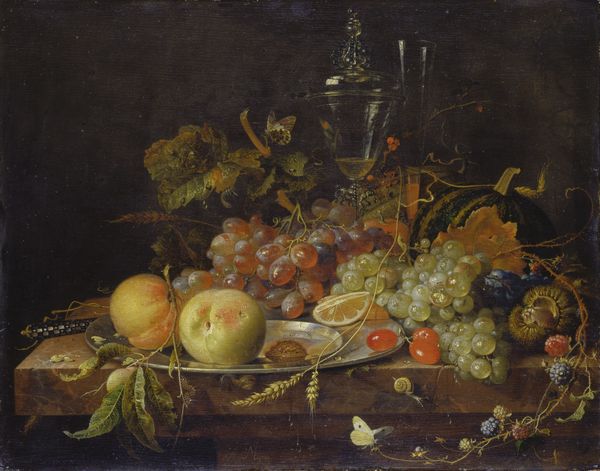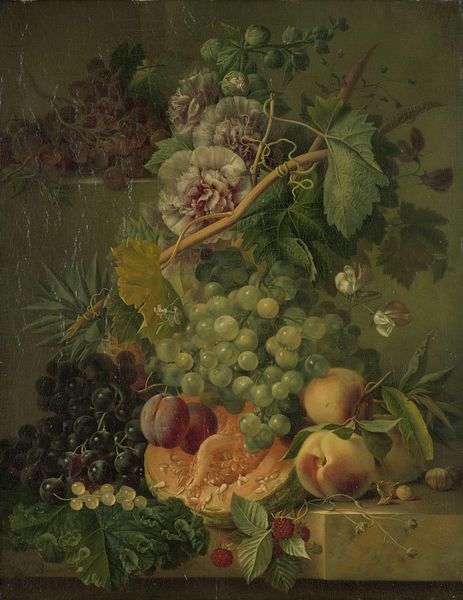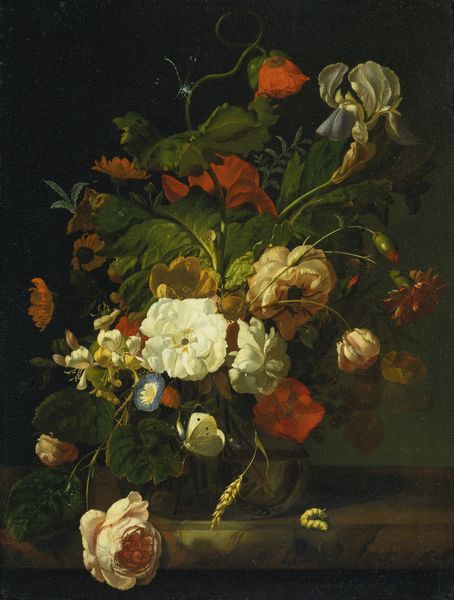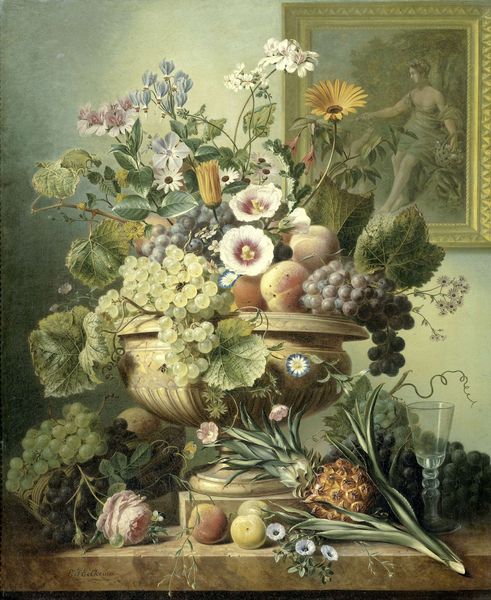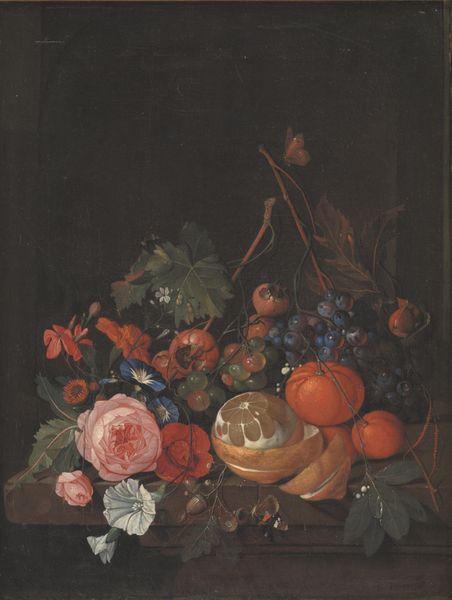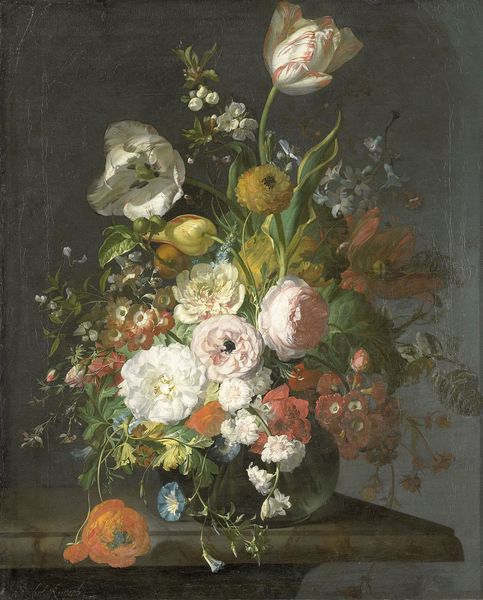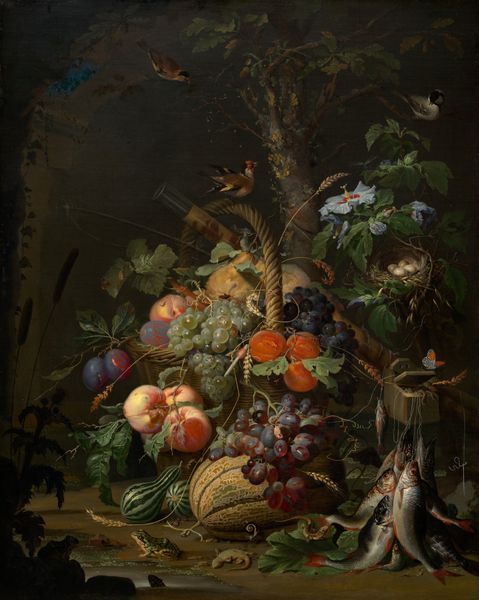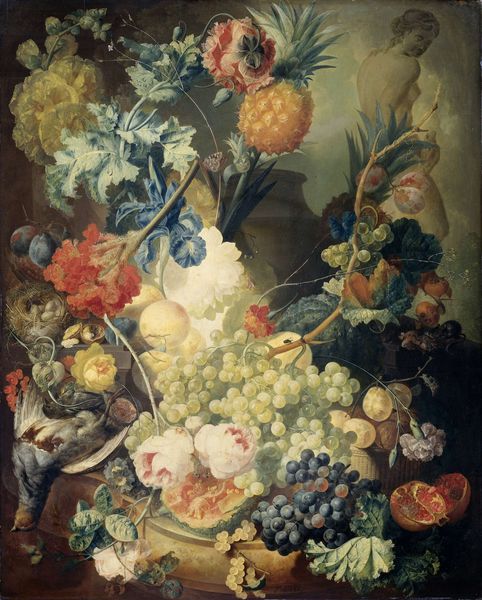
oil-paint
#
gouache
#
oil-paint
#
oil painting
#
fruit
#
romanticism
#
genre-painting
Dimensions: height 40.3 cm, width 31.8 cm, thickness 1.7 cm, depth 7 cm
Copyright: Rijks Museum: Open Domain
This still life was painted by Jan Evert Morel in the late 1700s, using oil on canvas. Of course, painting is itself a kind of material transformation. Pigments are extracted and refined, then mixed with oil, a binder that allows them to be suspended and applied to the canvas. Morel’s skill lies in his ability to mimic the textures and surfaces of the natural world. Look at the way he captures the soft fuzz of the peaches, the subtle gradations of color in the grapes, and the delicate petals of the flowers. It’s a testament to his technical mastery, achieved through careful observation and meticulous brushwork. But it's more than just a display of skill. This painting reflects a particular worldview, one that values abundance, beauty, and the careful cultivation of nature. The very act of arranging these objects – the fruit, the flowers, the glass vase – speaks to a desire to impose order and harmony on the world. This wasn’t just any display of produce; it was crafted to communicate social status, aesthetic refinement, and access to worldly goods. Morel gives lasting form to the material culture of his time.
Comments
No comments
Be the first to comment and join the conversation on the ultimate creative platform.
